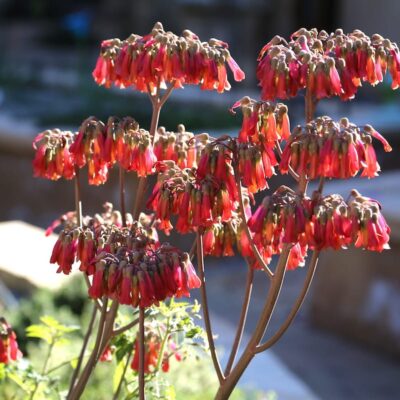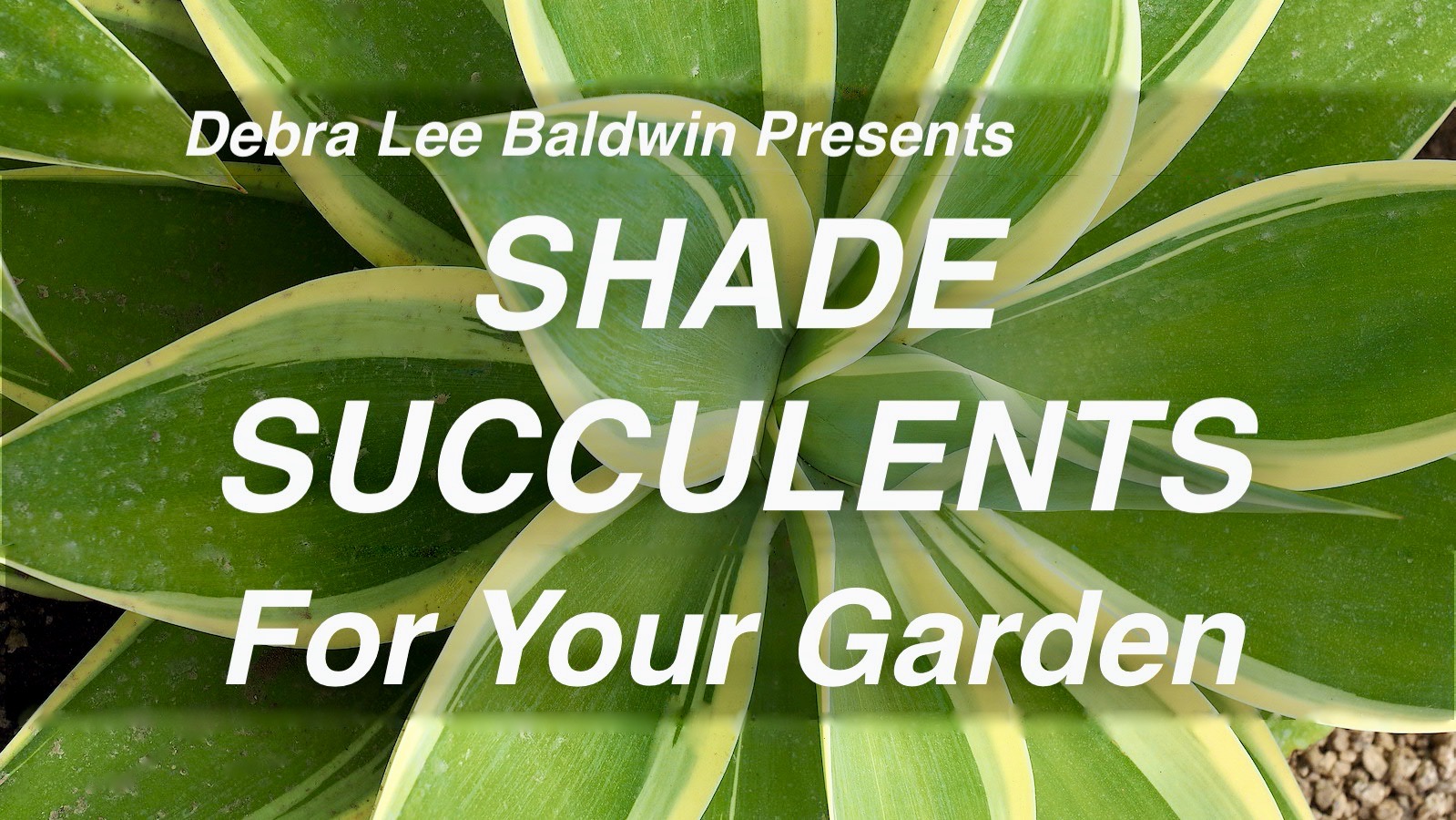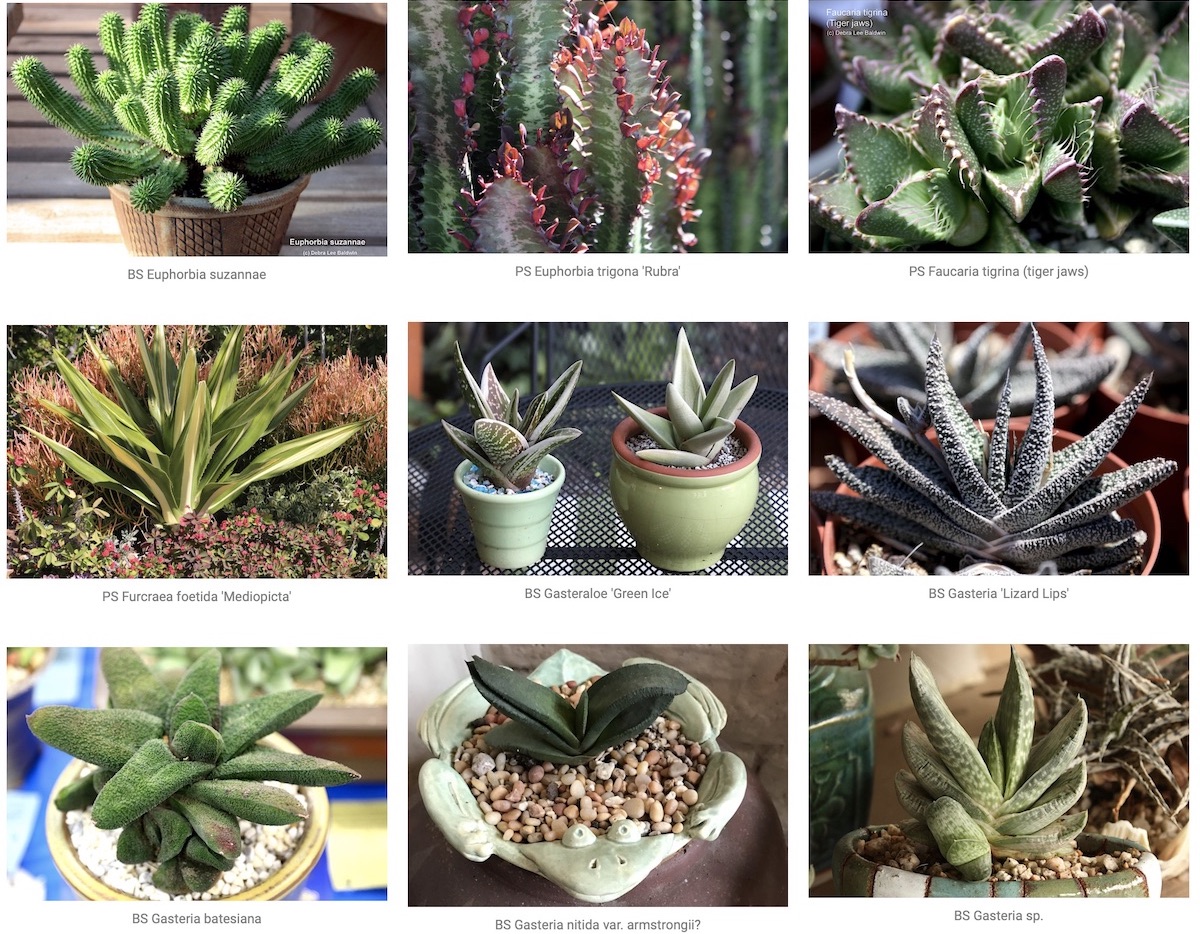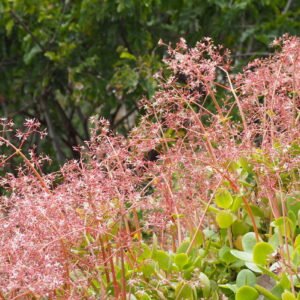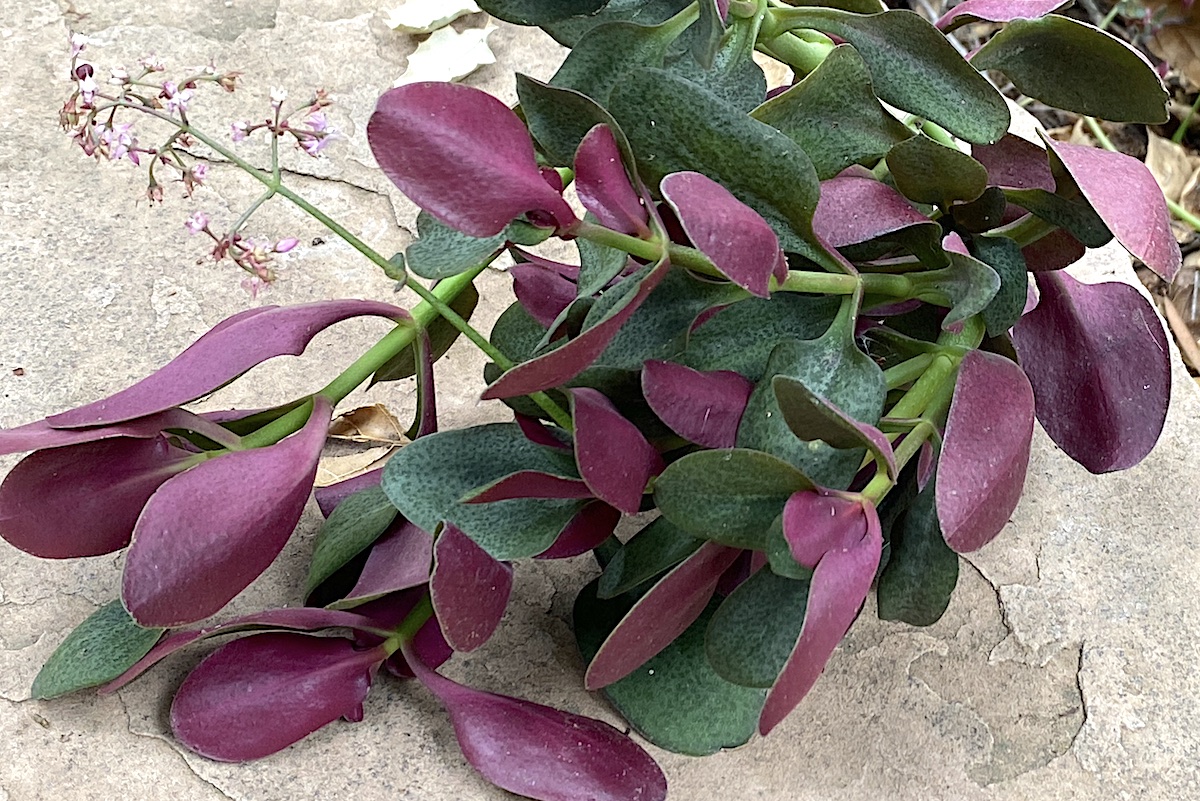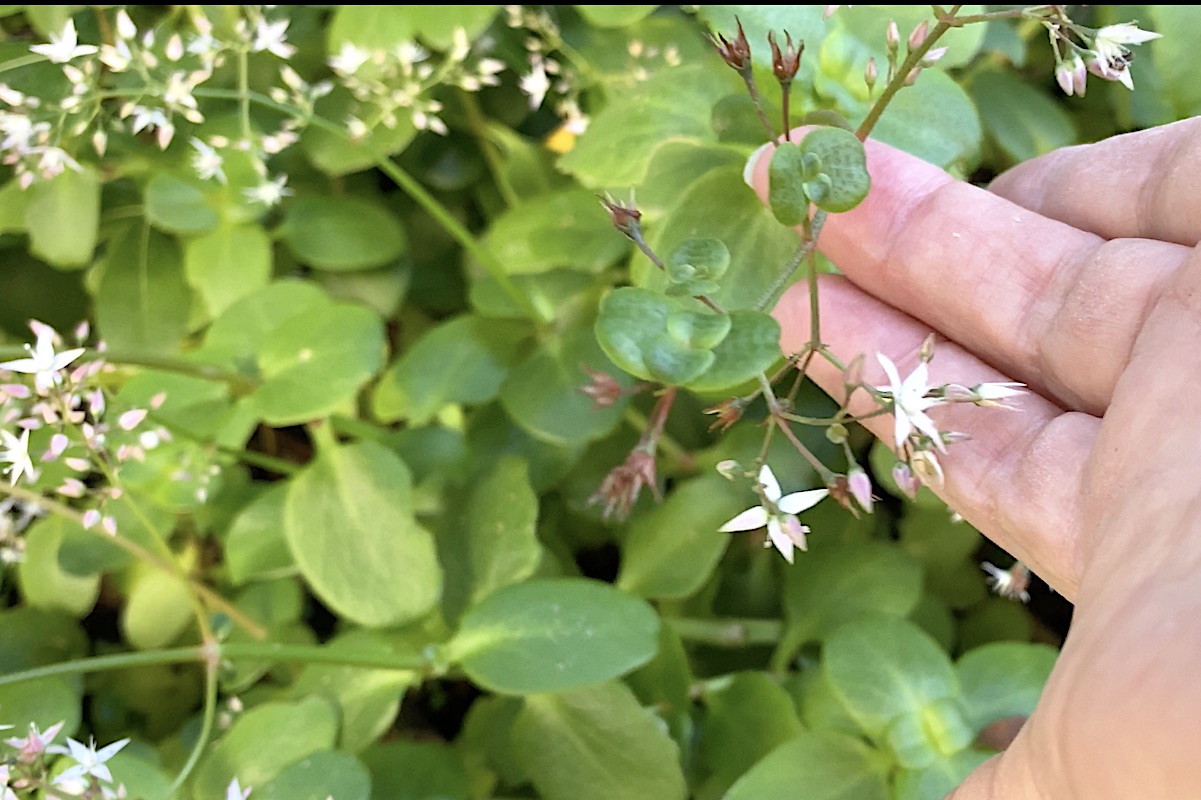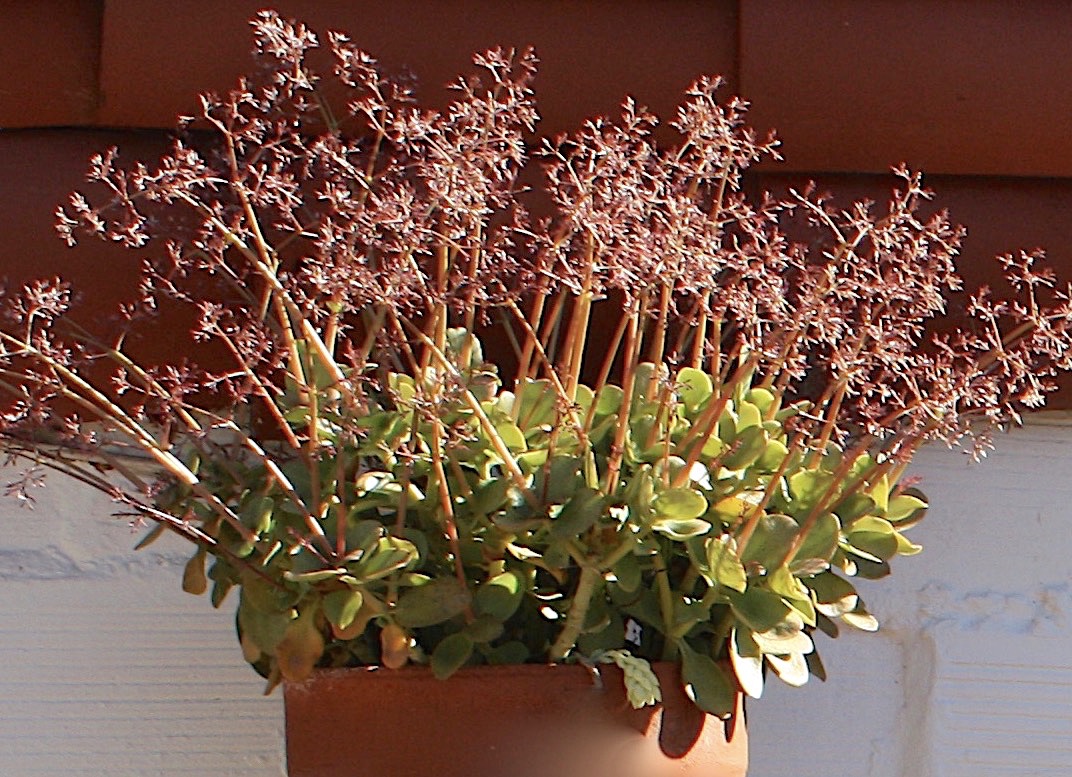I'm eager to share with you my fondness for fuzzy kalanchoes! The varieties and design uses of these unusual succulents are diverse and wonderful. I've included important tips to ensure success.
The first time I saw a fuzzy kalanchoe, of course I had to touch it. It proved as photogenic as it was pettable. When backlit, velvety, fingerlike leaves glowed. Brown dashes along leaf margins suggested the stitches of a plush toy.
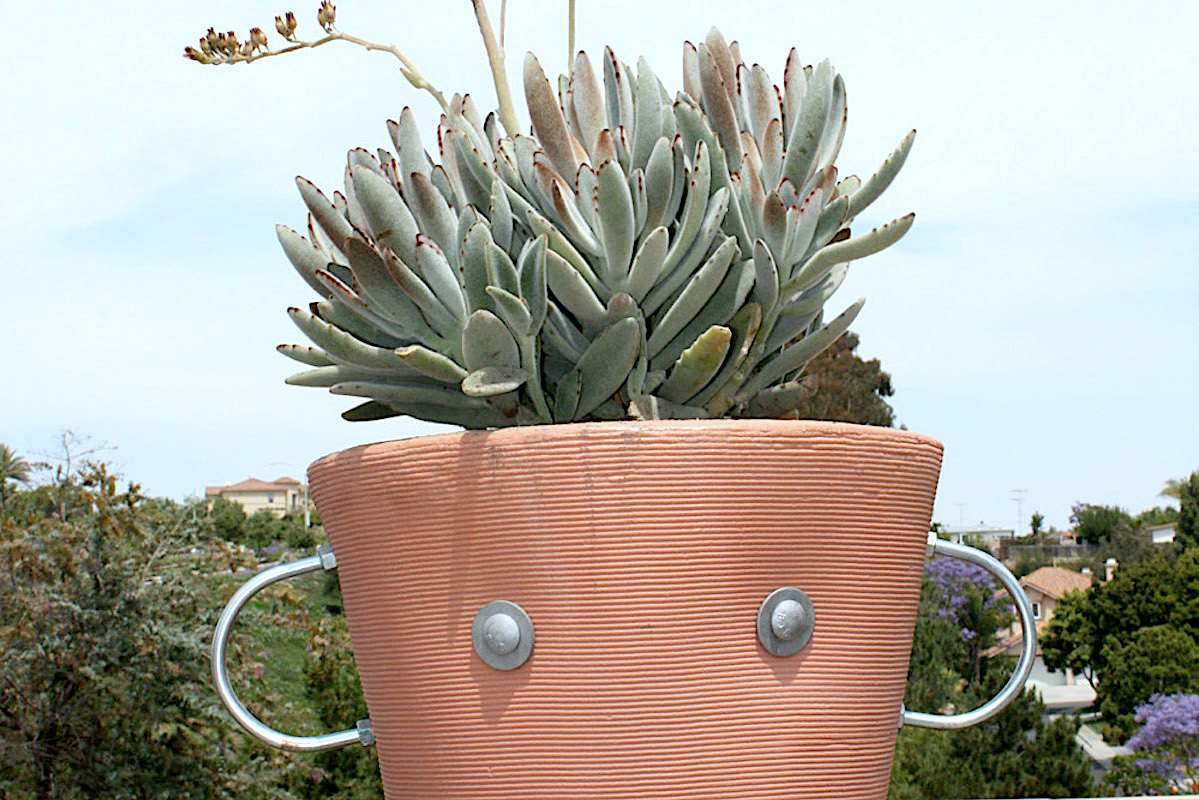 Face pot of Kalanchoe tomentosa (panda plant) at the Children's garden at the San Diego Botanic Garden.
Face pot of Kalanchoe tomentosa (panda plant) at the Children's garden at the San Diego Botanic Garden.
Tomentose (fuzzy) kalanchoes thrive in pots, and look good solo or combined with crassulas, sedums and other small succulents. Their pet-me texture is striking in contrast with smoother leaves and glossy pot glazes. Most make good gifts for kids and adults alike.
In this post you'll see and discover:
- Silvery-blue Kalanchoe tomentosa (shown above)
- Golden-brown 'Chocolate Soldier' and 'Teddy Bear'
- Dainty white Kalanchoe eriophylla
- Kalanchoe orgyalis (copper spoons)
- Kalanchoe bracteata (silver teaspoons)
- Treelike, tricky-to-grow Kalanchoe beharensis (felt bush).
- A desirable one I saw on the Laguna Beach garden tour (want!).
Below: Snow White panda plant (Kalanchoe eriophylla) is a diminutive novelty succulent useful for adding interest to container gardens.
 Kalanchoe eriophylla
Kalanchoe eriophylla
Why the fuzz?
Botanists conjecture fine hairs help to shade the plant, deflect the sun's ultraviolet rays, keep pests away, and lessen moisture loss.

Kalanchoe tomentosa 'Teddy Bear'
Above: Kalanchoe tomentosa 'Teddy Bear' is an Altman Plants introduction.
Kalanchoe tomentosa (panda plant)
Kalanchoe tomentosa (panda plant) and its cultivars are among the easiest succulents to grow, and excellent for beginners. One small nursery plant, after a year's growth, will yield three or more cuttings you can use to start new plants.
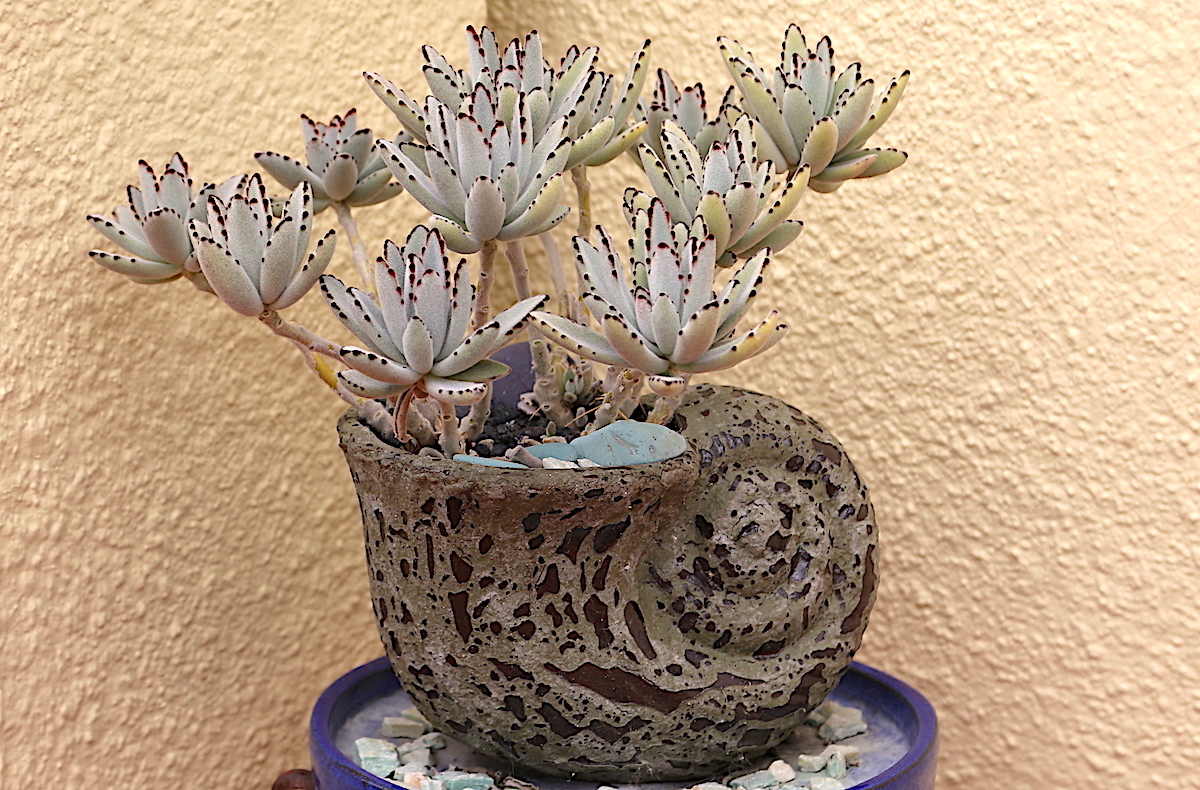 I love the color and texture repetition of this pot pairing.
I love the color and texture repetition of this pot pairing.
The Kalanchoe tomentosa in the photo above is getting a bit leggy---meaning rosettes perch atop denuded stems. Fuzzy kalanchoes typically need refreshing sooner or later. See how, step-by-step, on this site's Kalanchoe page.
 Kalanchoe tomentosa 'Chocolate Soldier'. Plant-pot pairing by Diana Clark
Kalanchoe tomentosa 'Chocolate Soldier'. Plant-pot pairing by Diana Clark
Silvery-blue panda plant---the most common of the fuzzies---is a go-to succulents when I want to repeat a container's blue-gray hue. Golden brown cultivars of Kalanchoe tomentosa provide a similar effect in warmer-toned pots.
 This Kalanchoe tomentosa graces a hanging pot by Alicia Iraclides of Potted Arts. See us at the nursery making plant selections and how they came together in the video, How to Pair Succulents with Hanging Pots (5:45).
This Kalanchoe tomentosa graces a hanging pot by Alicia Iraclides of Potted Arts. See us at the nursery making plant selections and how they came together in the video, How to Pair Succulents with Hanging Pots (5:45).
See a happy panda plant in my video
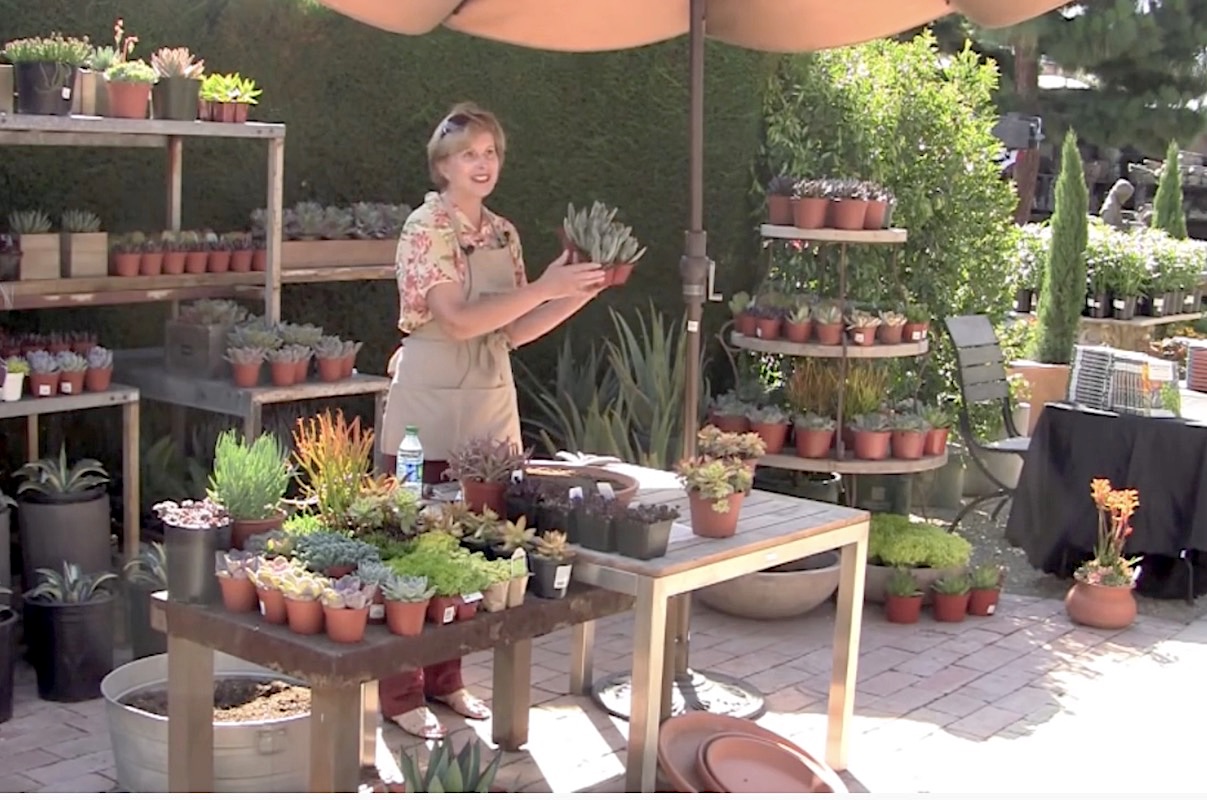 Kalanchoe tomentosa (panda plant) is one of "Ten Terrific Colorful Succulents" I show in this presentation, above, at Roger's Gardens nursery. See it beginning at 5:25.
Kalanchoe tomentosa (panda plant) is one of "Ten Terrific Colorful Succulents" I show in this presentation, above, at Roger's Gardens nursery. See it beginning at 5:25.
Felt bush and 'Fang'
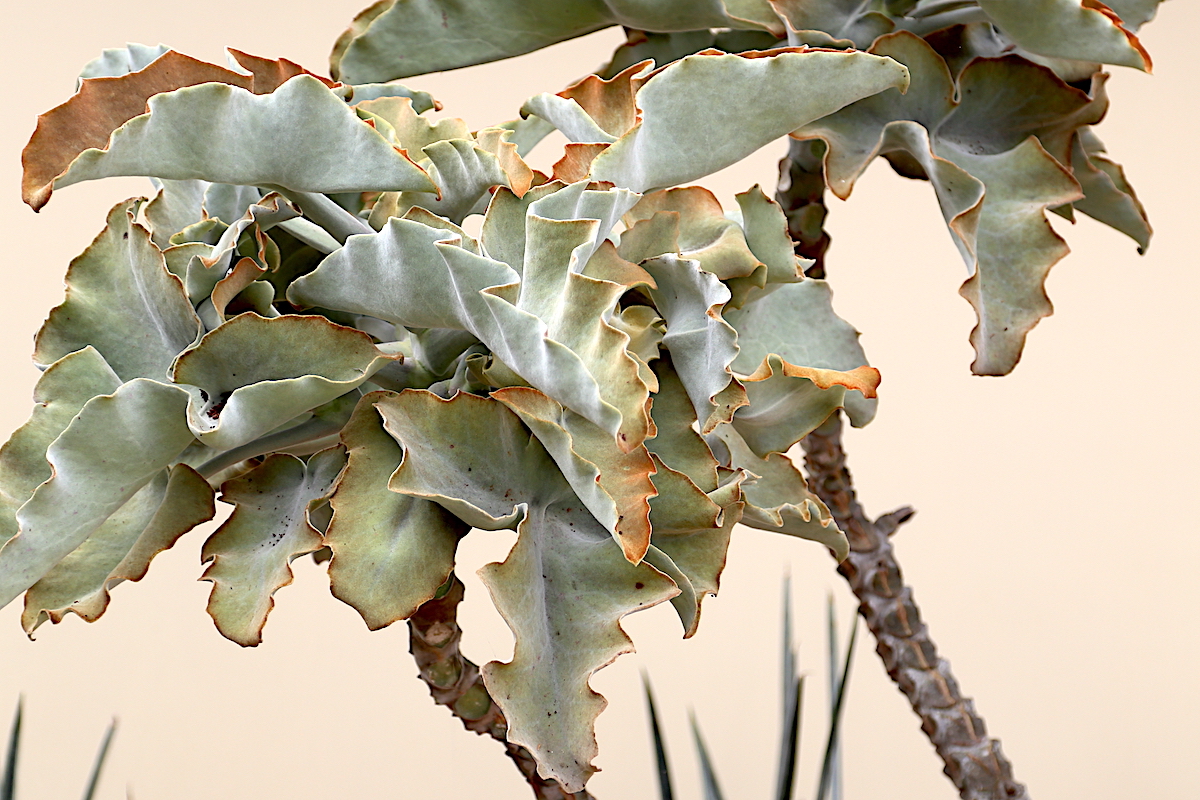 Kalanchoe beharensis (felt bush) as shown in my book, Designing with Succulents (2nd ed.)
Kalanchoe beharensis (felt bush) as shown in my book, Designing with Succulents (2nd ed.)
Treelike Kalanchoe beharensis, named after the southern Madagascan town of Behar, grows to about six feet tall with arrowhead-shaped leaves averaging 18 inches long. A wonderful aspect of this large succulent and its whiskery cultivar 'Fang' is that you can grow new plants from a single leaf. Lay it atop potting soil in bright shade, and as the leaf shrivels, a baby plant will grow where stem meets leaf.
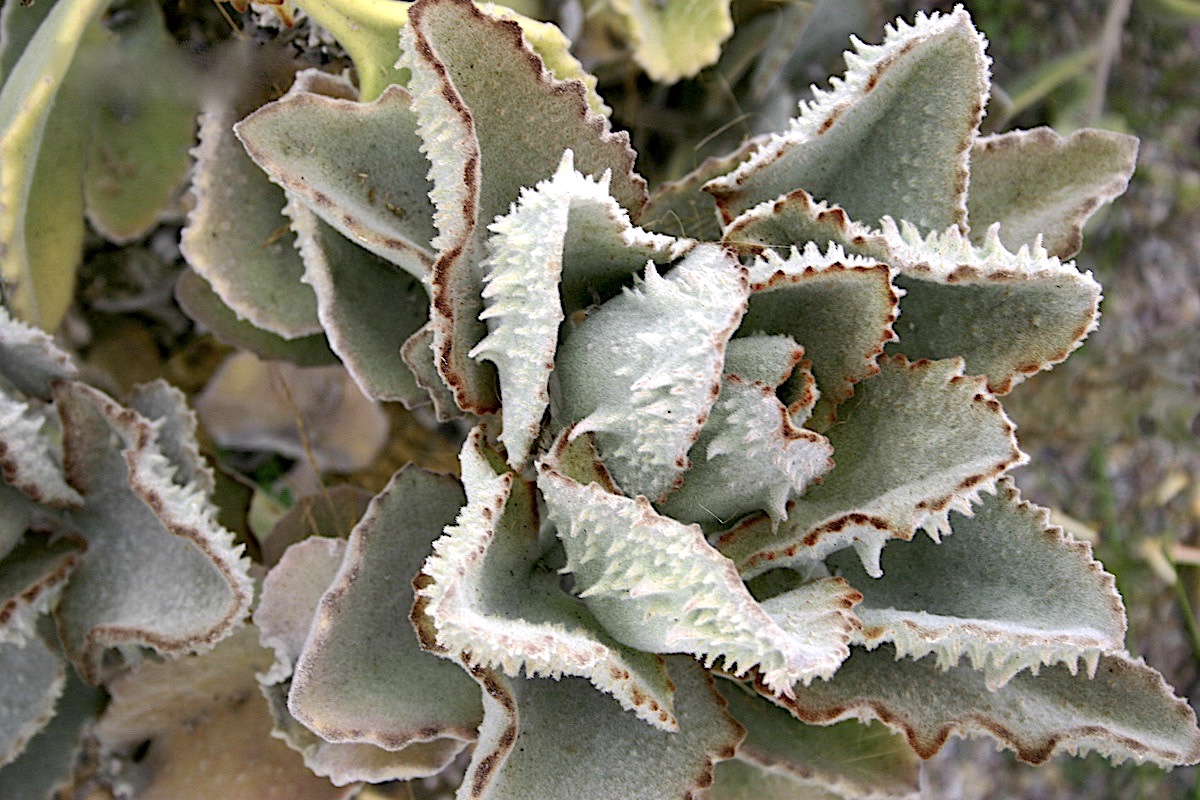 Kalanchoe beharensis 'Fang'
Kalanchoe beharensis 'Fang'
It's tempting to plant treelike kalanchoes in the garden as focal points, but they can be tricky. Felt bush and 'Fang' prefer temperatures between 40 and 85 degrees, and coastal conditions like those of Santa Barbara, Laguna Beach or Coronado. Otherwise they tend to drop their leaves, exposing a spindly trunk lined with divots where stems were attached. Conversely, if Kalanchoe beharensis gets too happy, heavy clusters of leaves can cause weak limbs to break. If necessary, prop up the branches.
Copper spoons and silver spoons
 Kalanchoe orgyalis (Copper spoons)
Kalanchoe orgyalis (Copper spoons)
These oval-leaved shrub succulents do best in coastal gardens. Leaves of copper spoons are velvety brown on top and silvery gray underneath; flowers are yellow on branching stems.
Silver spoons (Kalanchoe bracteata, below) looks similar but leaves are uniformly silver-gray. It's often confused with nearly identical Kalanchoe hildebrandtii, which has greenish-yellow flowers instead of red.
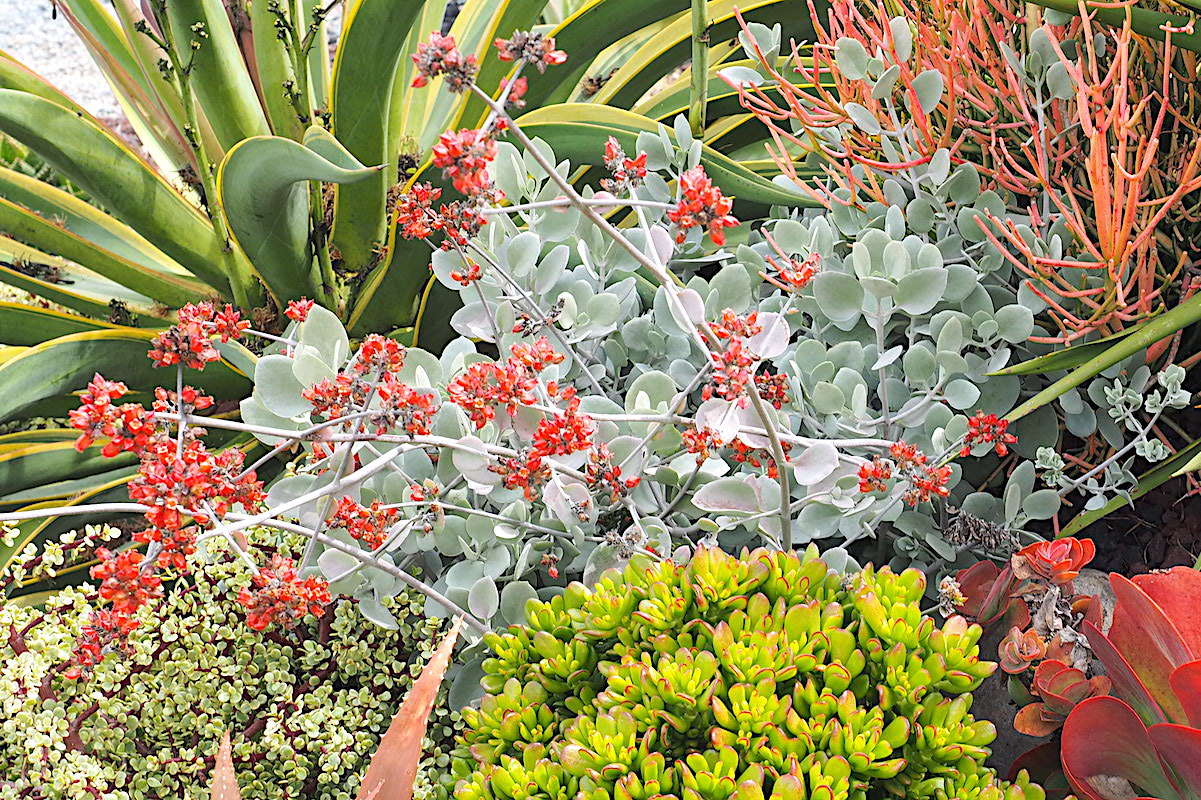 Kalanchoe bracteata in bloom
Kalanchoe bracteata in bloom
Above: Isn't this a gorgeous garden? In it the designer used several different fuzzy kalanchoes. See it in my video: A Colorful Succulent Garden to Copy (3:51).
The fuzzy kalanchoe on my wish list
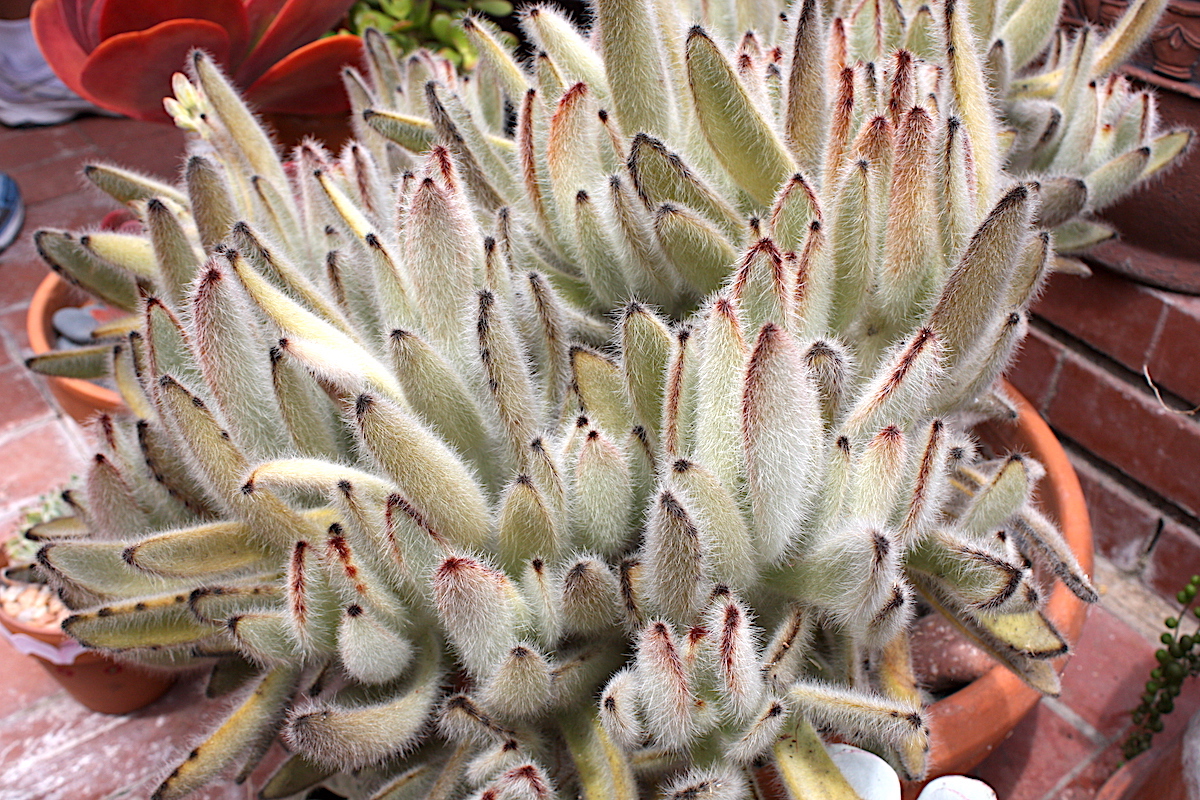 Kalanchoe tomentosa 'Super Fuzzy'
Kalanchoe tomentosa 'Super Fuzzy'
I met Kalanchoe 'Super Fuzzy' on a Laguna Beach garden tour ages ago. I've since looked for it everywhere. If you have a source, would you kindly LMK? Thanks!
Care and cultivation
The care, cultivation, propagation and refreshing of tomentose kalanchoes is the same for non-fuzzy varieties. Learn more on this site's Kalanchoe page.
Kalanchoe: Details, Photos and Varieties
Kalanchoe: Details, Photos and Varieties Native to Madagascar, kalanchoes thrive outdoors in zone 9 (and higher if in dappled shade). Protect from frost. >>Jump Down to the Gallery About Kalanchoes Kalanchoes are beautiful soft succulents, easy to propagate from cuttings, with showy flowers. It’s a highly diverse genus, so to help you make sense of it,…
The post Fuzzy Kalanchoes: Varieties, Uses and Tips appeared first on Debra Lee Baldwin. Copyright © Debra Lee Baldwin.
from Debra Lee Baldwin https://ift.tt/33gW9qN
via IFTTT

